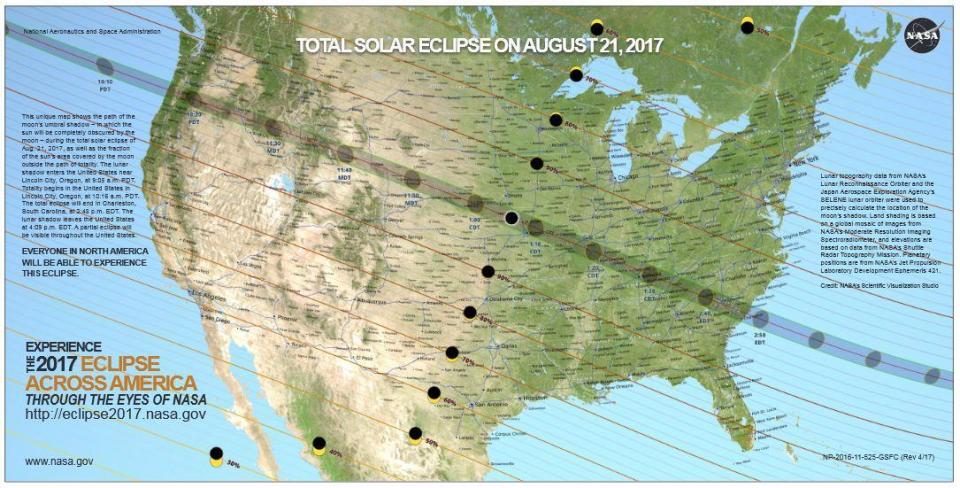What time is the eclipse? Maps, path, safety tips and everything you need to know before the sun disappears

The eclipse is coming. Next week, the moon will go in front of the sun and blot it out, turning the US dark.
It's the first time that such an event has been seen across the entire US for 99 years. And it will be the biggest ever movement of tourists the world has ever seen.
It's all leading up to that couple of minutes when the sun disappears. And, thankfully, we know exactly when that will happen.
What day is the eclipse?
It will all happen on 21 August, in the morning and early afternoon.
What time is the eclipse?
It lasts between mid-morning and mid-afternoon, depending where you are. It spreads from the west to the east, meaning that despite the fact it won't take long to actually cross the country, the timings make it look like it lasts much longer.
Obviously, exactly what time the eclipse arrives will depend partly on where you are. But as a rough guide, if you use pacific time then it will arrive at about 10.20 in the morning; if you use mountain time then it will be between 11.30 and midday; if you're on central time then it will arrive sometime between 1pm and 1.30; and those on the east coast will get it sometime between 2.30 and 3.
See below for exact details on when it will get to you, and how it will move across the country.
How long will it all last?
Just a couple of minutes. The longest time will be in Illinois, where it will last 2 minutes and 40 seconds, though it won't be all that much shorter everywhere else.
The true joy of an eclipse is in the build-up and the changes, though, so you can certainly drag it out. Make sure to spend a little time outside before the eclipse arrives, so that you get accustomed to the light; that will make the eerie darkness when the moon blocks out the sun even more strange.
Where will it happen?
Everyone in North America will be able to see some of the eclipse. But not everyone will see all of it.
The "path of totality will arrive in the north west, arriving first at Lincoln City in Oregon at 9.05am pacific daylight time. It will then spread across the US, going east more quickly than it goes south, and will leave the US at Charleston, South Carolina, at 2.43pm local time.

If you'd like more specific information about where and when the eclipse will be passing over where you live, then it's probably best to consult Nasa's special page which is full of very detailed eclipse maps showing the route and times. But it's also worth remembering that you'll see some of it wherever you are, and that the eclipse will be moving quickly – so long as you're outside at roughly the right time, you'll see something spectacular.
What if you're not in the path of totality, or somewhere else entirely like Europe?
Eclipses aren't either off or on – the path of totality shows where the moon will cover the sun entirely, but outside of that there'll be lots to see too.
In places that are far away – even as far away as the UK and Europe – then you'll still be able to see some of the solar eclipse. The only problem is that it won't be "total", since the sun and moon won't be perfectly aligned, and you'll instead see a partial eclipse where the sun looks like it has had a bite taken out of it.

 Yahoo News
Yahoo News 